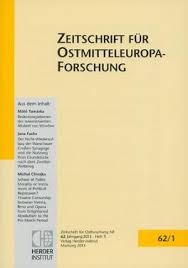Die Altstadt als Passage. Quellen- und bildkritische Analyse der „Denkschrift des Stadtbaurats über die Gesundung der Altstadt“ von Stettin (1936)
The Historic Town Center as Passage. Critical Analysis of Images and Sources Relating to the ‘Memorandum of the Director of Urban Planning on the Recovery of the Historic Center’ of Szczecin (1936)
Author(s): Katja BernhardtSubject(s): Museology & Heritage Studies, Rural and urban sociology, Fascism, Nazism and WW II
Published by: Verlag Herder-Institut
Keywords: urban planning; Szczecin (Stettin); National Socialism; heritage conservation; city renewal;
Summary/Abstract: The plans that were developed by governors and regional leaders for the transformation of Stettin (Szczecin) under National Socialism, were ambitious and aimed at establishing the city as a leading centre on the southern Baltic coast. The details of these plans have hardly ever been investigated, both because only scant sources have survived and because the available sources only marginally found their way into research. This article is based around one such source. The article deals with the ‘Memorandum of the Director of Urban Planning on the Recovery of the Historic Centre’, which was compiled in 1936 by the director of urban planning Bruno Lehnemann and was made up of drawn plans, text documents and annotated reproductions of earlier cityscapes. Though the documentation is only partially preserved, it provides illuminating insights into planning ideas, requirements and processes as well as specific urban development projects and concepts. The article is based on detailed source criticism that allows us to reconstruct the planning process and its relation to urban planning in the Weimar Republic era. The breakdown of the planning context is made possible by consulting further archived, documented memoranda and planning concepts, and shows, in turn, that the so-called ‘recovery of the historic city centre’ was only part of a comprehensive plan to redesign the entire city as a regional centre. Also, through critical analysis of the memorandum’s surviving visual material, we are able to more fully understand, both the urban planning concept and the significance that Szczecin was to gain through its envisioned transformation. This investigation taps into archival material relating to Szczecin’s urban planning history under National Socialism that, until now, only marginally has been researched. At the same time, by combining discussion on source material, historical reconstruction and indepth image analysis, the study opens up a discourse relating to urban planning history, which has the potential to give fresh impetus in the area of Nazi planning history.
Journal: Zeitschrift für Ostmitteleuropa-Forschung
- Issue Year: 67/2018
- Issue No: 1
- Page Range: 67-92
- Page Count: 26
- Language: German

